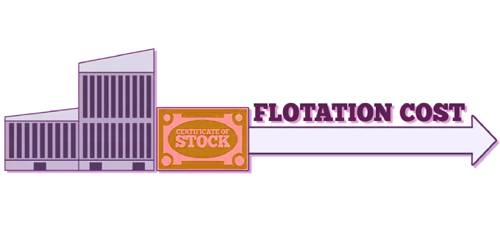A flotation cost is one of the costs of raising capital which a business might incur. It is most commonly associated with issuing equity securities such as stocks. In some cases, it can also apply with debt securities. It can be underwriting, legal and registration fees, or printing expenses and other costs.
Floatation cost: Floatation cost is the cost of accounting legal, underwriting and other costs of issuing securities. The costs associated with creating capital through the issue of new stocks or bona, including the compensation earned by the investment banker plus legal, accounting and printing expenses are named as floatation cost.
Floatation cost involves the cost of printing the certificates, paying the underwriters, government fees, and other associated costs. As new issues are intended to raise capital for the company, it is important for it to ensure that it will at least make back what it spends.
The expense involved in selling a new security issue. This expense includes items such as registration of the issue and payment to the investment banker. Floatation costs depend on the size and riskiness of an issue as well as on the type of security to be sold.
Floatation costs include all costs of issuing the securities, such as banker’s fees, legal fees, underwriting fees etc. We can calculate the cost of new common stock using the dividend growth model by simply evaluating the price of a current common stock by the number of flotation costs.
En = [Dividends / (StockPrice(1 – F)] + g.
One key flotation cost when issuing stock is the underwriting spread. This involves underwriters who, in this context, guarantee that the company issuing stock will receive a certain amount per share, and thus a certain overall total. In the event that the investing public does not buy all the issued stock at lunch, the underwriters will buy and hold any unsold stock.
To compensate underwriters for this risk, the amount the company receives for each share will be lower than the price any public investors pay for the new stock. This is known as the underwriting spread and is effectively the profit margin for the underwriters.
















